
In-depth understanding of the data type characteristics of Go language requires specific code examples
Go language is a modern programming language that combines the advantages of many traditional programming languages. , and added some new features. In the Go language, data type is a very important concept, which determines the type and range of data we can store and process. This article will provide an in-depth introduction to the characteristics of common data types in the Go language and provide specific code examples to help readers better understand.
1. Basic data types
Go language provides some basic data types, including integers (int), floating point numbers (float), Boolean values (bool) and characters (rune). These data types have the following characteristics:
- Integer type (int): Go language supports signed and unsigned integer types with different digits, such as int8, int16, int32, int64, uint8, uint16, uint32 and uint64. These integer types occupy different spaces in memory, so you can choose the appropriate type based on your actual needs. The following is a sample code:
var num1 int8 = 127 var num2 uint16 = 65535 fmt.Println(num1, num2)
- Floating point type (float): Go language provides two floating point types, namely float32 and float64. Floating point numbers can represent numbers in decimal or scientific notation. Here is a sample code:
var f1 float32 = 3.14 var f2 float64 = 3.141592653589793238462643383279502884197169399375105820974944 fmt.Println(f1, f2)
- Boolean value type (bool): Boolean value is used to represent true or false. There are only two possible values, true and false. The following is a sample code:
var b1 bool = true var b2 bool = false fmt.Println(b1, b2)
- Character type (rune): The character type is a data type used to represent a single Unicode character. In the Go language, the character type is called rune, and its underlying implementation is int32. The following is a sample code:
var c1 rune = 'A' var c2 rune = '爱' fmt.Println(c1, c2)
2. Composite data types
In addition to basic data types, Go language also provides some composite data types, including arrays, slices, and maps , structures and interfaces. These data types have the following characteristics:
- Array type (array): An array is a fixed-size collection of elements of the same type. In Go language, the length of an array is part of the array type, so arrays of different lengths are different types. The following is a sample code:
var arr1 [3]int = [3]int{1, 2, 3}
var arr2 [5]string = [5]string{"apple", "banana", "cherry", "date", "elderberry"}
fmt.Println(arr1, arr2)- Slice type (slice): A slice is a dynamic array with an unfixed length that can be expanded or contracted as needed. Slicing is implemented based on arrays, but the length of the slice can be changed dynamically. The following is a sample code:
var slice1 []int = []int{1, 2, 3, 4, 5}
fmt.Println(slice1)- Mapping type (map): A map is a collection of key-value pairs, also called a dictionary. It is unordered and the keys are unique. The following is a sample code:
var m1 map[string]int = map[string]int{"apple": 1, "banana": 2, "cherry": 3}
fmt.Println(m1)- Structure type (struct): Structure is a user-defined data type used to store different types of data. Fields in a structure can use different data types. The following is a sample code:
type Person struct {
Name string
Age int
}
var p1 Person = Person{Name: "Alice", Age: 20}
fmt.Println(p1)- Interface type (interface): An interface is an abstract type used to define the behavior of an object. An interface defines a set of method signatures, and the specific implementation is provided by the type that implements the interface. The following is a sample code:
type Animal interface {
Eat()
Sleep()
}
type Cat struct {
Name string
}
func (c Cat) Eat() {
fmt.Println(c.Name, "eat fish")
}
func (c Cat) Sleep() {
fmt.Println(c.Name, "sleep on the roof")
}
var a Animal = Cat{Name: "Tom"}
a.Eat()
a.Sleep()This article introduces the characteristics of common data types in the Go language and provides specific code examples to help readers better understand. For beginners, familiarity with the characteristics of these data types is crucial to writing correct and efficient programs. Through continuous practice and practice, readers can have a deeper understanding of the data types of the Go language and flexibly apply them to their own projects.
The above is the detailed content of Explore the characteristics of Go language data types. For more information, please follow other related articles on the PHP Chinese website!
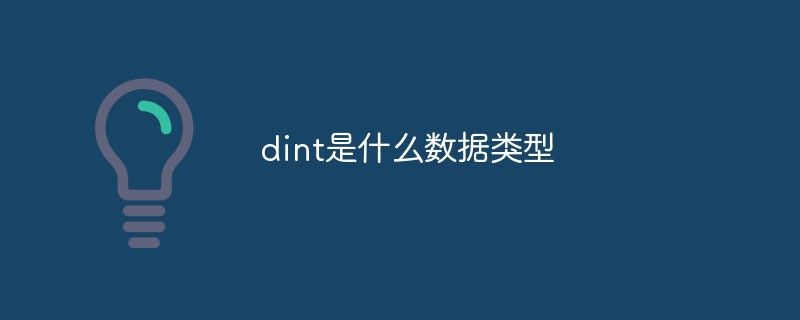 dint是什么数据类型Sep 05, 2022 am 11:05 AM
dint是什么数据类型Sep 05, 2022 am 11:05 AMdint是带符号位的32位整数类型;dint的表示方法及范围是“L#-2147483648~L#+2147483647”,定义为双整数或长整数,字节是电脑里的数据量单位,在计算机中,数据只用0和1这种表现形式。
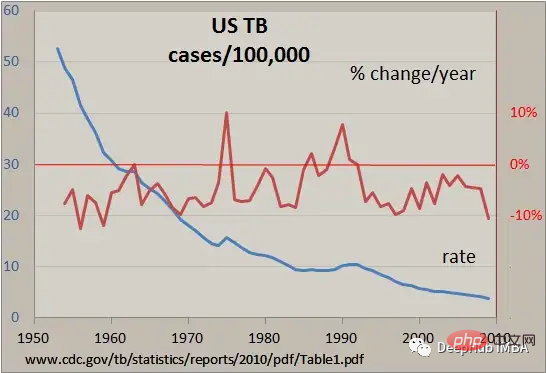 Python时间序列数据操作的常用方法总结Apr 24, 2023 pm 10:22 PM
Python时间序列数据操作的常用方法总结Apr 24, 2023 pm 10:22 PM时间序列数据是一种在一段时间内收集的数据类型,它通常用于金融、经济学和气象学等领域,经常通过分析来了解随着时间的推移的趋势和模式Pandas是Python中一个强大且流行的数据操作库,特别适合处理时间序列数据。它提供了一系列工具和函数可以轻松加载、操作和分析时间序列数据。在本文中,我们介绍时间序列数据的索引和切片、重新采样和滚动窗口计算以及其他有用的常见操作,这些都是使用Pandas操作时间序列数据的关键技术。数据类型Python在Python中,没有专门用于表示日期的内置数据类型。一般情况下都
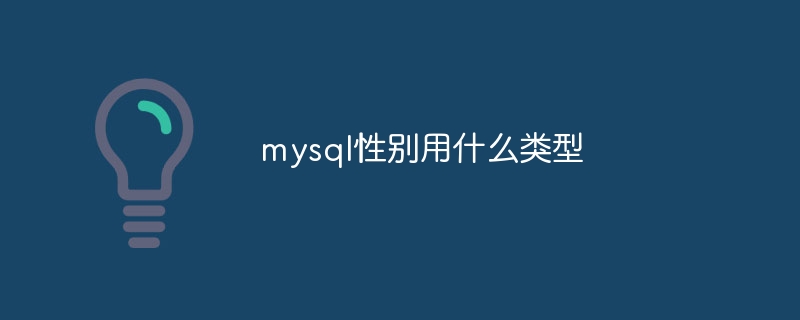 mysql性别用什么类型Jun 13, 2023 am 11:33 AM
mysql性别用什么类型Jun 13, 2023 am 11:33 AMMySQL性别采用多种数据类型来表示性别字段,例如CHAR、ENUM等,最终采用哪种类型,取决于实际需求以及数据存储的大小和性能。
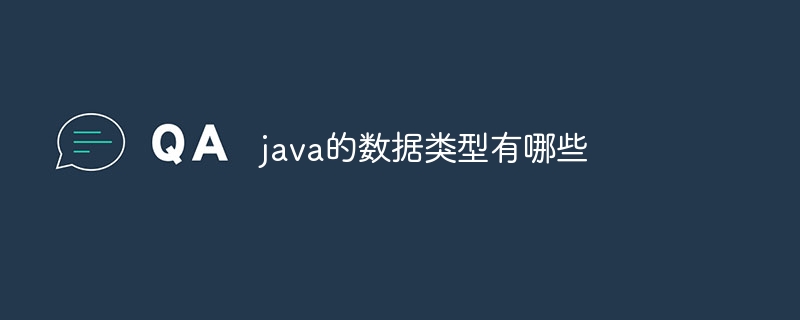 java的数据类型有哪些Jan 30, 2024 pm 03:23 PM
java的数据类型有哪些Jan 30, 2024 pm 03:23 PMjava数据类型:1、整型;2、浮点型;3、字符型;4、布尔型;5、其他数据类型;6、引用类型;7、原始类型与封装类;8、自动装箱与拆箱;9、可变参数;10、注解;11、枚举;12、原始类型和引用类型的选择。Java是一种强类型语言,因此每种数据都有其固定类型。
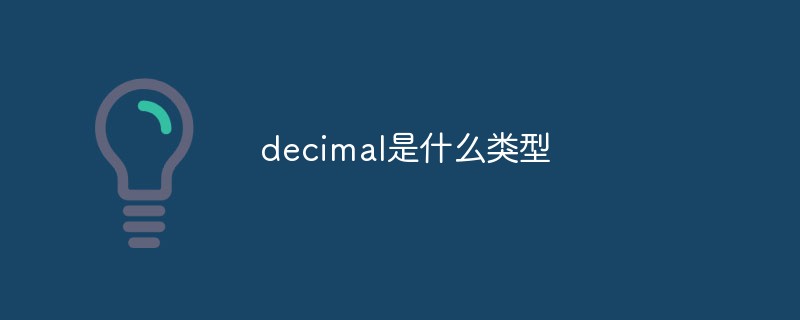 decimal是什么类型Mar 18, 2021 pm 04:03 PM
decimal是什么类型Mar 18, 2021 pm 04:03 PMdecimal是MySQL中存在的精准数据类型,语法格式“DECIMAL(M,D)”。其中,M是数字的最大数(精度),其范围为“1~65”,默认值是10;D是小数点右侧数字的数目(标度),其范围是“0~30”,但不得超过M。
 MySQL数据类型详解:你需要知道的知识点Jun 15, 2023 am 08:56 AM
MySQL数据类型详解:你需要知道的知识点Jun 15, 2023 am 08:56 AMMySQL是世界上最流行的关系型数据库管理系统之一,因其可靠性、高安全性、高扩展性以及相对低的成本而得到了广泛应用。MySQL的数据类型定义了各种数据类型的存储方式,是MySQL的重要组成部分。本文将详解MySQL的数据类型,以及在实际应用中需要注意的一些知识点。一、MySQL的数据类型分类MySQL的数据类型可以分为以下几类:整数类型:包括TINYINT、
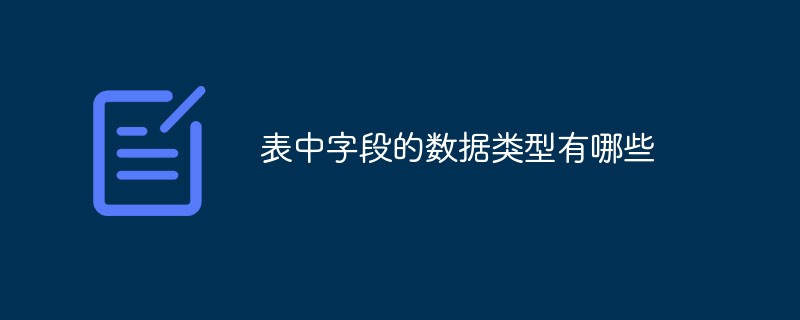 表中字段的数据类型有哪些Jan 19, 2021 am 10:18 AM
表中字段的数据类型有哪些Jan 19, 2021 am 10:18 AM表中字段的数据类型有:1、二进制类型,包括Binary、Varbinary、Image;2、字符串类型,包括CHAR、VARCHAR、TEXT等;3、Unicode数据类型,包括Nchar,Nvarchar和Ntext;4、日期和时间数据类型,包括DATE、TIME、YEAR等;5、数值数据类型,包括INT、FLOAT、BIGINT等;6、货币数据类型;7、特殊数据类型等等。
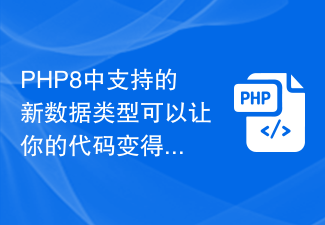 PHP8中支持的新数据类型可以让你的代码变得更加清新Jun 21, 2023 am 11:20 AM
PHP8中支持的新数据类型可以让你的代码变得更加清新Jun 21, 2023 am 11:20 AM随着PHP8的发布,这个流行的编程语言引入了新的数据类型,这些新类型可以大大简化代码并提高代码的可读性。在本文中,我们将介绍PHP8中的四种新类型:联合类型、命名参数、只读属性和允许为空的属性,并解释它们如何为开发者带来更好的编程体验。联合类型联合类型是PHP8中引入的一种新类型,它可以让开发者在一个变量中存储多种不同类型的值。例如,一个变量可以


Hot AI Tools

Undresser.AI Undress
AI-powered app for creating realistic nude photos

AI Clothes Remover
Online AI tool for removing clothes from photos.

Undress AI Tool
Undress images for free

Clothoff.io
AI clothes remover

AI Hentai Generator
Generate AI Hentai for free.

Hot Article

Hot Tools

PhpStorm Mac version
The latest (2018.2.1) professional PHP integrated development tool

Atom editor mac version download
The most popular open source editor

SublimeText3 Linux new version
SublimeText3 Linux latest version

ZendStudio 13.5.1 Mac
Powerful PHP integrated development environment

mPDF
mPDF is a PHP library that can generate PDF files from UTF-8 encoded HTML. The original author, Ian Back, wrote mPDF to output PDF files "on the fly" from his website and handle different languages. It is slower than original scripts like HTML2FPDF and produces larger files when using Unicode fonts, but supports CSS styles etc. and has a lot of enhancements. Supports almost all languages, including RTL (Arabic and Hebrew) and CJK (Chinese, Japanese and Korean). Supports nested block-level elements (such as P, DIV),






